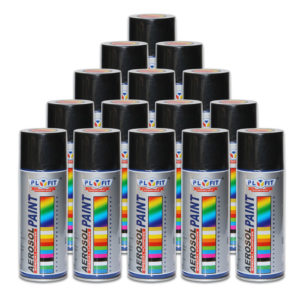Get Rid Of Cluster Flies In Your Home (And Prevent Them From Coming Back)
Cluster flies typically live outdoors and feed on flowers and fruit. As the temperatures drop, though, these flies begin to head indoors through small cracks and crevices in a building structure. These flies typically hide in clusters or groups in dark corners, wall cracks, and other tight spaces. You’ll also likely find these critters under the curtains, behind pictures, beneath furniture, inside door casings, around windows, and under baseboards. The clusters will generally hide out in these locations through winter and into the spring – only reemerging to the outside when the weather warms.
While some clusters may go undetected, these flies may become a problem if they emerge in your home and become somewhat of a nuisance in your common living places, which commonly happens. In any case, though, knowing a little more about the life cycle of these flies as well as a few treatment options for getting rid of these pests will help you eliminate a frustrating infestation.
Life Cycle of Flies
These flies lay their eggs singly during the summer months. Most eggs are deposited into the small cracks in the soil. The eggs hatch within three days. Once hatched, the maggots emerge and implant themselves into an earthworm for the duration of the larval stage, which typically lasts 13 to 22 days. Following the larval stage, the pupal stage lasts between 11 and 14 days. This process repeats itself to create four generations through each summer.
Cluster Fly Elimination
Once these pesky flies have invaded your home, you’ll likely want to evacuate them as quickly as possible. To effectively eliminate these pests:
1. Use a vacuum with a hose to capture single flies or clusters of the adult insects as they appear. Be sure to check the attic, basement, crawlspace, and false ceiling in your home.
2. If vacuuming is not effective or conducive to the location of the flies, consider using a contact pyrethrum spray. This option can be kept on hand and applied lightly as needed to kill on contact.
3. Once you have eliminated the active flies, you’ll need to inspect your home and other spaces for any remaining live or dead flies. Begin by inspecting around the windows in each room. Pay special attention to any void or crack in the wall or around the window. You’ll want to treat any of these areas where you suspect flies with a residual dust insecticide. You will likely want to apply this treatment with a small hand duster or power duster. The insecticide should be applied to any enclosed void, including beneath the baseboards, behind electrical outlets, and in door frames. You may need to drill, dust, and reseal some enclosed wall voids located in critical areas.
4. You may also want to consider using a residual spray insecticide in your attic, basement, closet, storeroom, or other areas where the flies seem to commonly resurface.
5. Additionally, installing an insect or fly light in your attic or false ceiling where it is difficult to identify the location from which cluster flies are originating is another approach. In this case, when the flies awaken come spring, the flies will be attracted to and captured by the fly light. It is important to capture a large portion of the living cluster fly population so they are not able to further inhabit your living space.
Prevention
At any rate, prevention is the best method of treatment for these flies. You can take effective measures in the early summer to keep these flies from ever entering your home.
Begin by keeping flies on the outside by sealing any noticeable cracks or holes with caulk. You’ll want to do this in the early winter before any of the flies begin looking for a place to overwinter. Avoid sealing the cracks during the fall or winter, as this will only force the flies already living in the wall spaces to emerge on the inside of the structure.
After sealing any existing holes or spaces, you’ll want to apply a residual pyrethroid-based insecticide on the exterior of your home’s structure in late August to early September. This timeframe is the period right before adult flies begin to overwinter. As the flies land on these exterior surfaces, they will die before than can even inhabit your home. These products can typically be applied with a one-gallon sprayer to the undersides of the eaves, around the windows and doors, and on the side of the building exposed to the sun.
In some cases, it may be more conducive to look to a professional for treating cluster flies. An individual well-versed in pests and other rodents will be able to identify the specific type of cluster fly infestation you are dealing with and recommend a specific treatment approach.
Non Toxic Spray

This non-toxic spray kills larvae, eggs, and adult insects by breaking down their exoskeleton. It is safe to spray around the home and works only on the insects. Feel good about spraying indoors around pets, plants and children.
All Natural Non Toxic Insect Killer Spray by Killer Green
